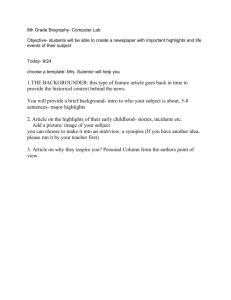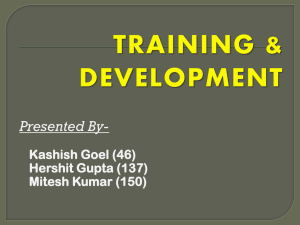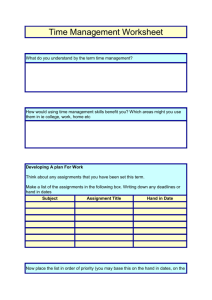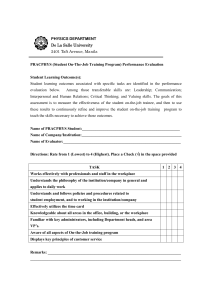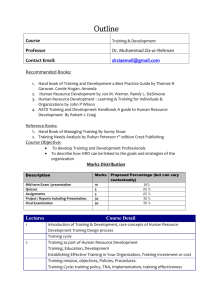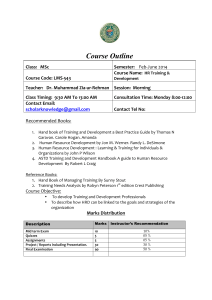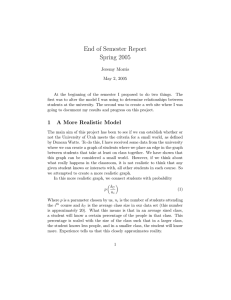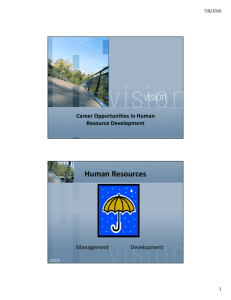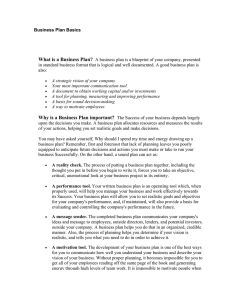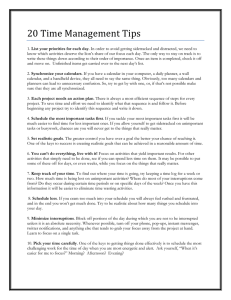Action Steps to Support Your Employee’s Learning
advertisement
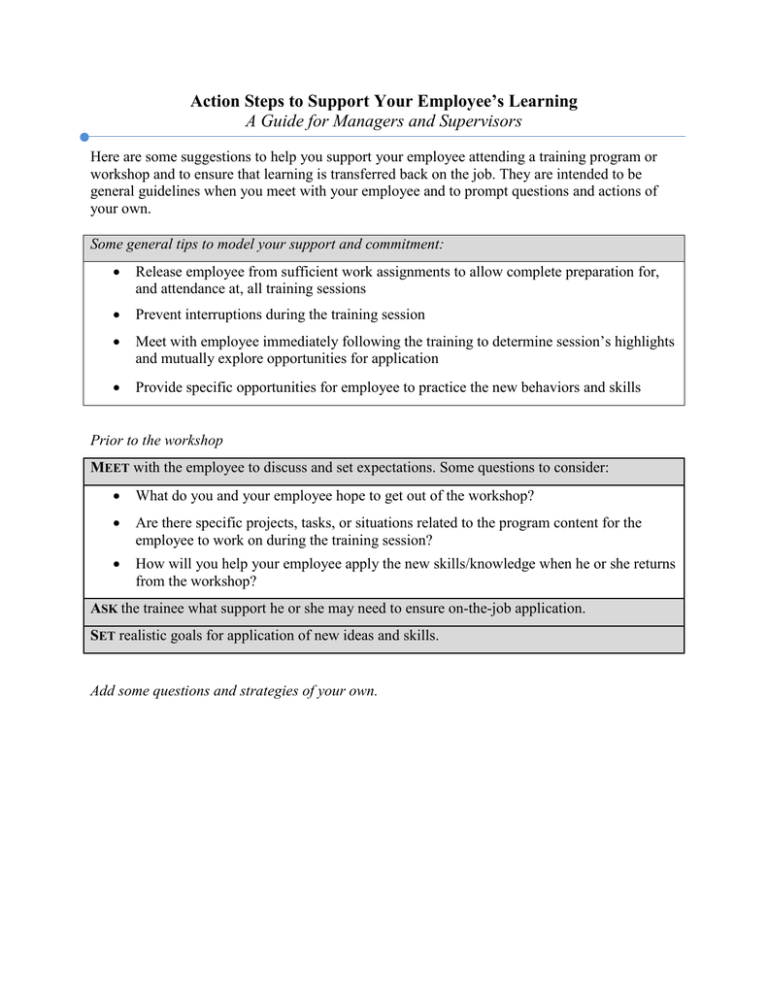
Action Steps to Support Your Employee’s Learning A Guide for Managers and Supervisors Here are some suggestions to help you support your employee attending a training program or workshop and to ensure that learning is transferred back on the job. They are intended to be general guidelines when you meet with your employee and to prompt questions and actions of your own. Some general tips to model your support and commitment: Release employee from sufficient work assignments to allow complete preparation for, and attendance at, all training sessions Prevent interruptions during the training session Meet with employee immediately following the training to determine session’s highlights and mutually explore opportunities for application Provide specific opportunities for employee to practice the new behaviors and skills Prior to the workshop MEET with the employee to discuss and set expectations. Some questions to consider: What do you and your employee hope to get out of the workshop? Are there specific projects, tasks, or situations related to the program content for the employee to work on during the training session? How will you help your employee apply the new skills/knowledge when he or she returns from the workshop? ASK the trainee what support he or she may need to ensure on-the-job application. SET realistic goals for application of new ideas and skills. Add some questions and strategies of your own. Post Training Follow-up DEBRIEF immediately after session. Some questions to ask your employee: What opportunities exist in your job for applying what you have learned? What concepts/techniques were useful to you? What actions can you take this week to utilize your training? What improvements and results do you expect to produce, and how will I know they have occurred? What potential problems, or barriers, do you see in putting these new skills into practice? How should we deal with them? How can I help you? ENCOURAGE immediate application of new ideas/skills to the job. INVITE, and then plan with, employee to share highlights of the session with co-workers, for example, either informally or at a staff meeting. FOLLOW UP to ensure that the transfer of learning back on the job continues by: Setting measurable goals/objectives for new levels of performance expected following application of training. You and your employee should jointly agree upon these goals and objectives and commit to them in writing. Involving employee in work-related decisions based on the new learning. Creating an environment where employee can feel secure to practice and apply new learning. Meeting on a regular basis. Acknowledging and reinforcing use of new learning. Having individual, supportive conversations to help employee have more realistic expectations when applying new skills. Praising any progress in mastery of new skills (be specific). Connecting new learning, as appropriate, to employee’s performance management development plan. Having employee report to the usefulness of what he or she learned—how has he or she been using it? Add some questions and strategies of your own. Sources: ASTD Trainer’s Toolkit: HRD Marketing Materials Designing and Delivering Cost-Effective Training Transfer of Training. ML Broad and JWNewstrom
